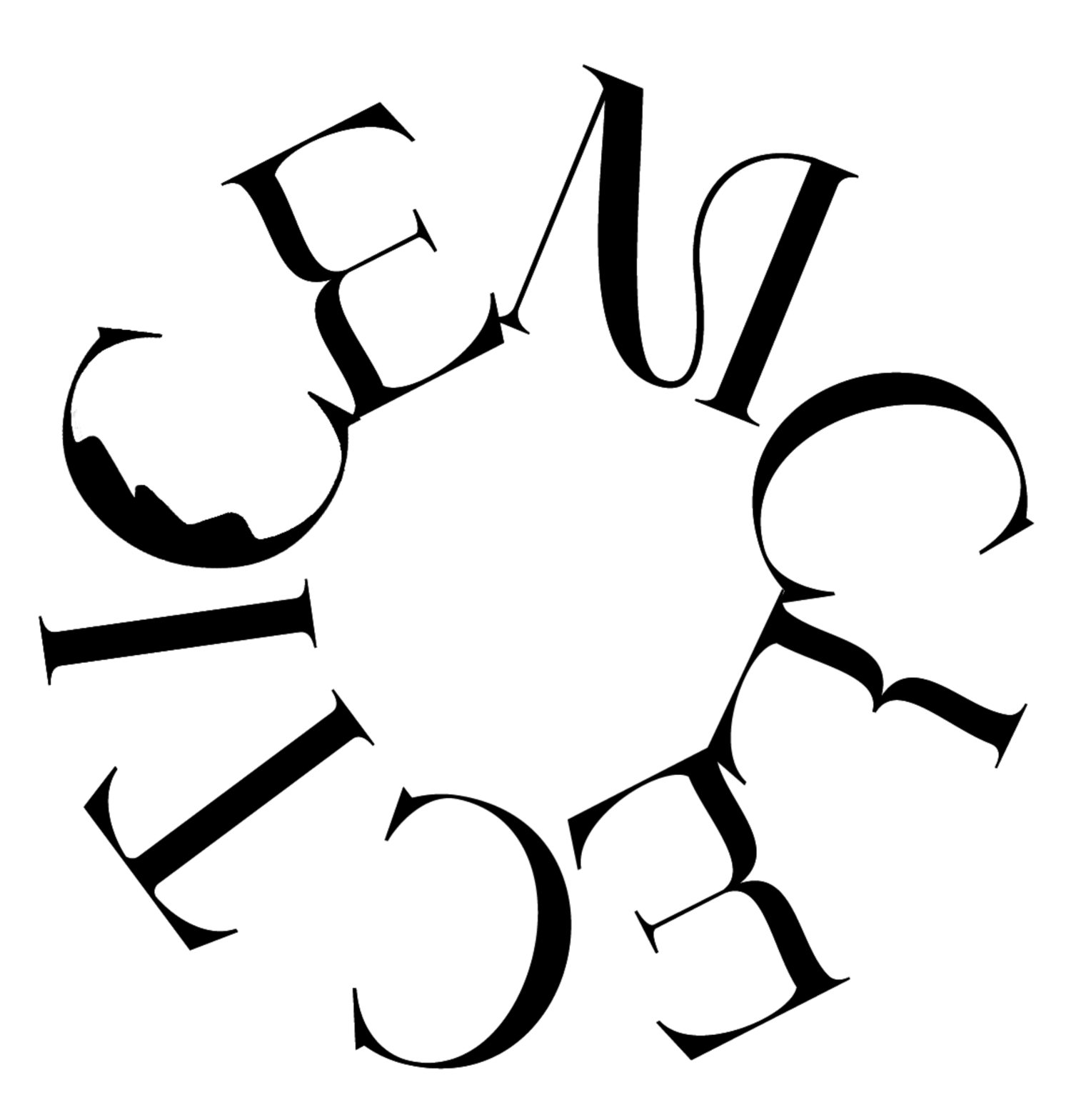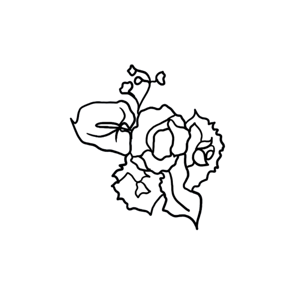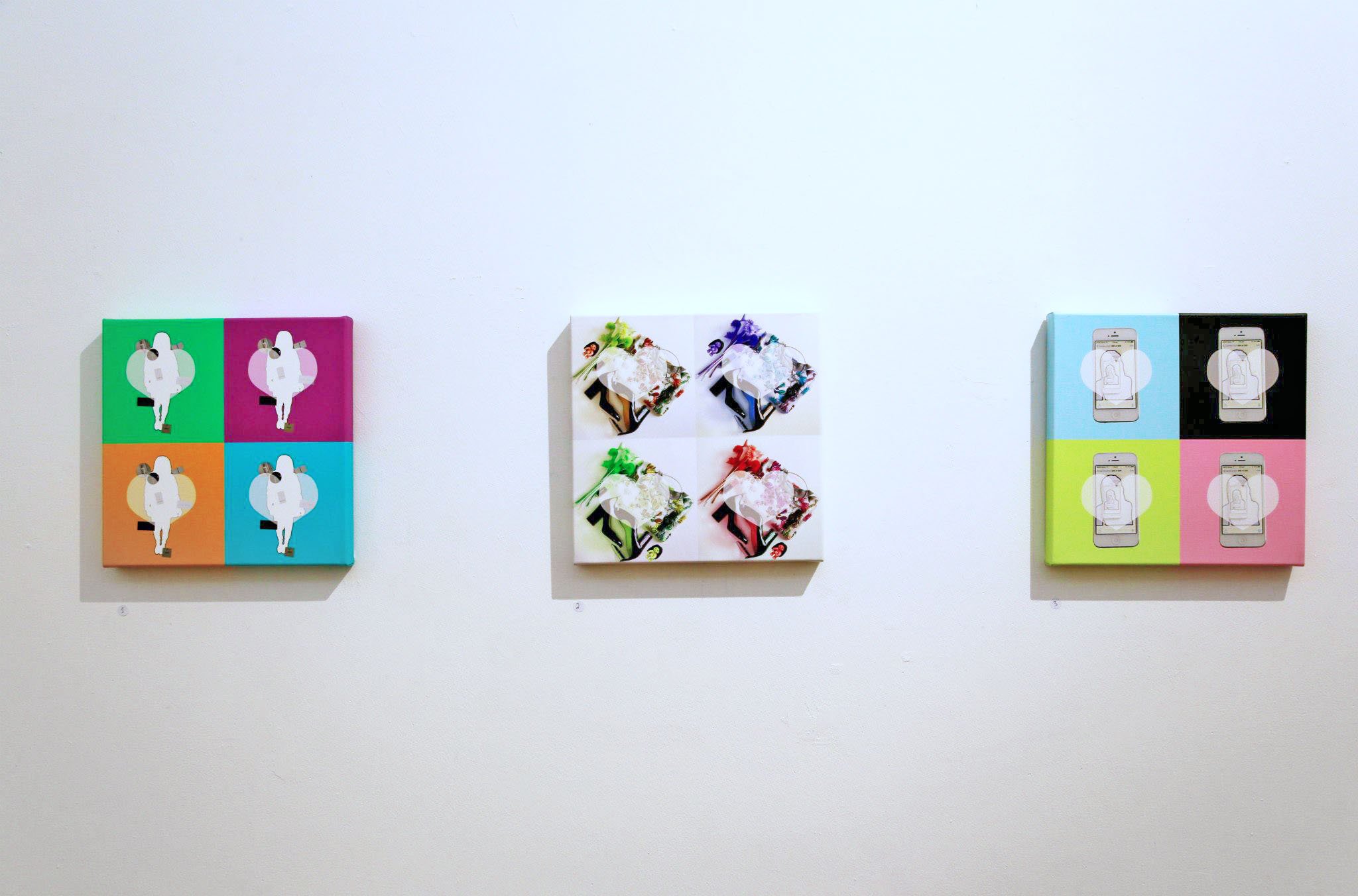
Brunswick Street Gallery
“The Internet is a Cultural Object” 2014
(Left to right: HASH, FLATLAY, POTD)
Synopsis of Previous Works.
Much like the work I explored in my final year of my Visual Art degree, the canvas prints pictured above is a continued exploration of ideas about our online presence and our online identities. My previous work were predominately portrayed through the medium of video. They involved videoing impromptu interviews of strangers, documenting their response to questions that directly linked to the “Facebook profile” without their knowledge. This meant that the prompts were taken out of context so to capture as authentic of a response from these people as possible. In doing so, I had intended to question the differences between our “real” and online identities. My previous work (in collaboration with Salina Sok) involved the reconstruction of people’s latest “Facebook status”. We recorded each of them verbalising these statuses, broke them apart, then putting them together in different video/sound sequences to create a narrative. This project highlighted the absurd, awkward and arbitrary nature of the “Facebook status/post” by attempting to display the dichotomy between the real and online presence.
Microcelebrity 1 POTD
Microcelebrity 2 FLATLAY
Microcelebrity 3 HASH
These works helped to inform my most recent work. Pictured above is a trilogy of canvas prints of digitally constructed work. At first I was worried that the pieces were too contrived and fictitious. It wasn’t till later that I realised the medium and construction itself mirrors its concept. These images took a slightly slant on the concepts explored ini my video work. Instead of commenting on identities portrayed in the online world, I wanted to create something that was even more relevant today – that is the notion of “instafame” or “online fame” born from social media. I find it incredibly interesting how big the “online celebrity” is today, yet personally I would not go as far as to say that they are almost in the same league as the Hollywood actor/actress – but it certainly seems so since the internet and our computer monitors are becoming our new television! “Talent” is becoming an even broader term now more than ever – you can be popular simply based on how many hashtags you place in your caption, or your aesthetic taste. I watched an interesting interview which featured an “insta-famous” teenage boy, what was striking to me was when he said that it was almost “abnormal”, strange or unusual to not be taking “selfies”. From what I vaguely remember, I understood him to say that it is the selfie that let people into his life, allow him to share it and build that relationship. Reality TV and the act of “watching” or the “Gaze” is becoming more prevalent and openly accepted in our society. “Fame” is becoming more and more possible with the growing online community and businesses. But is there a compromise? Is fame just based on nice aesthetics? And are we placing less and less importance on genuine unique talent? Because what is ironic about the aesthetics is that people, lifestyle / fashion bloggers…what have you…think that they’re sharing something unique to the community. What they’re ignoring (in few/some cases) that what they are sharing is simply a reproduction of what we have already seen (on Tumblr, on Pintrest, on 9Gag, Reddit, Youtube, Facebook, Instagram, etc etc etc.)
Down to the Nitty Gritty Details
I created images in 4 repeating colourful squares to mimic Andy Warhol’s work and to make reference to reproduction of mass media. The hearts represent the hearts that appear on Instagram when you “like” something.
Microcelebrity 1 POTD: Photo of the day. Photographed is the infamous “selfie” pose on the I-phone. The content of the portrait is blank to challenge the idea that by sharing your portrait is to gain “deeper” access or connection about a certain individual’s life.
Microcelebrity 2 FLATLAY: The fashion/lifestyle online world is fraught with “flay lay” images. Upon basic google research, one of the rules to take a proper “flatlay” is to make sure that you remain consistent with the theme of the image. My version of the flat lay breaks this rule with the incorporation of the “troll” (or online troll if you will), with increasingly unnatural hyper real colours as the image repeats (or reproduces).
Microcelebrity 3 HASH: -Tag (click for outfit details). These tags have been collaged into the “ootd” to poke fun at what we “like” as users of such social media. The reoccurring theme of the blank person is used to emphasis the simplicity of social media fame.
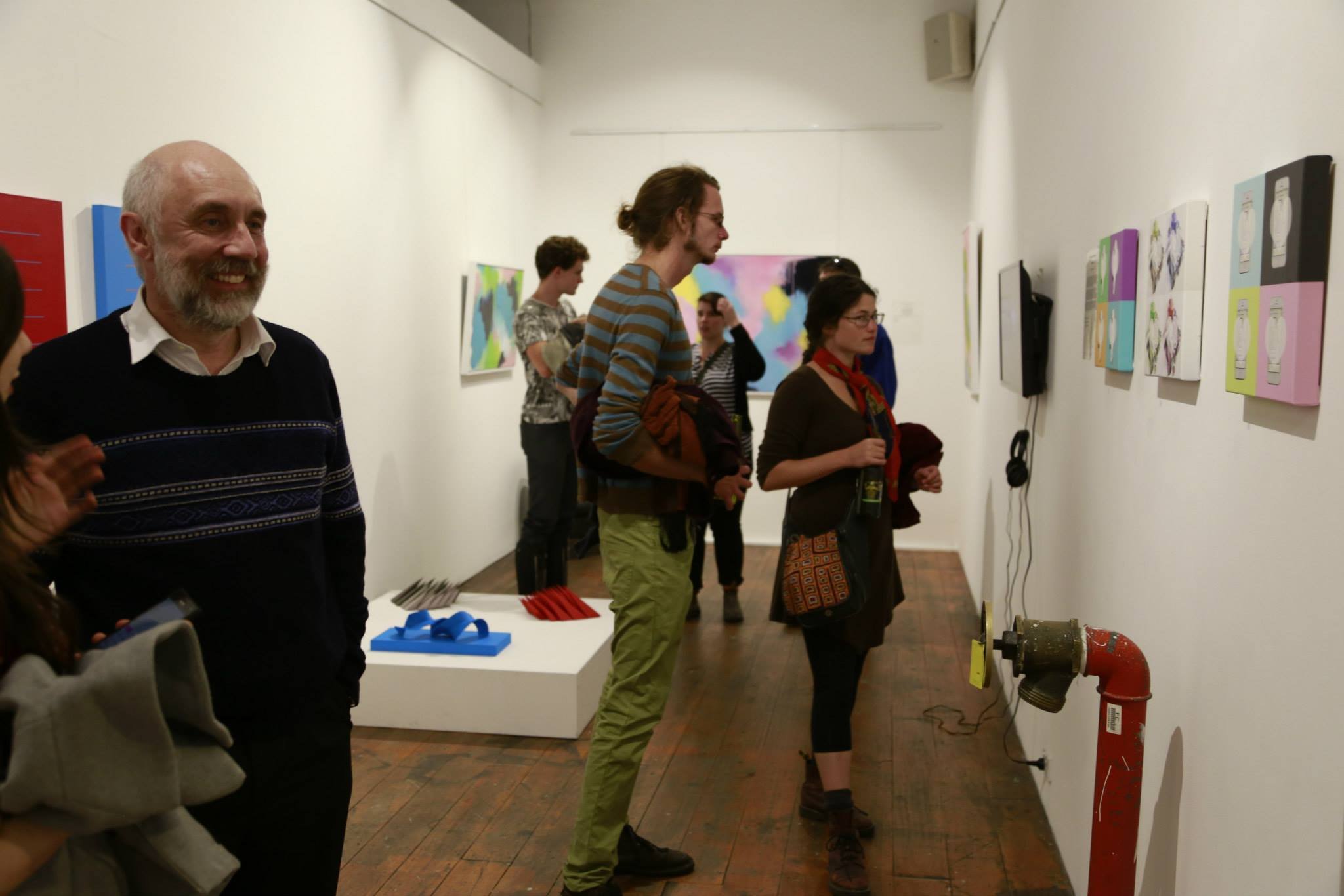
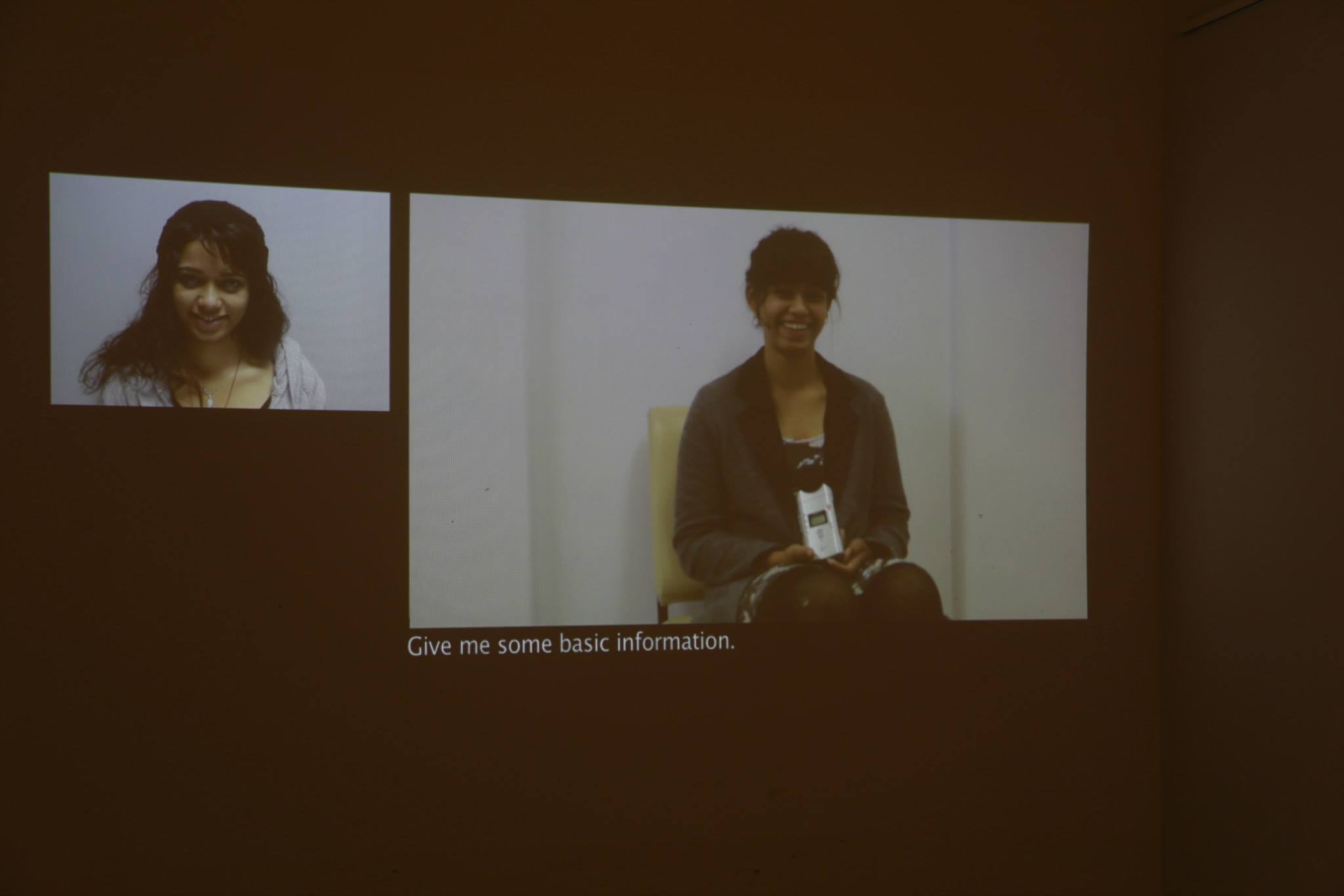

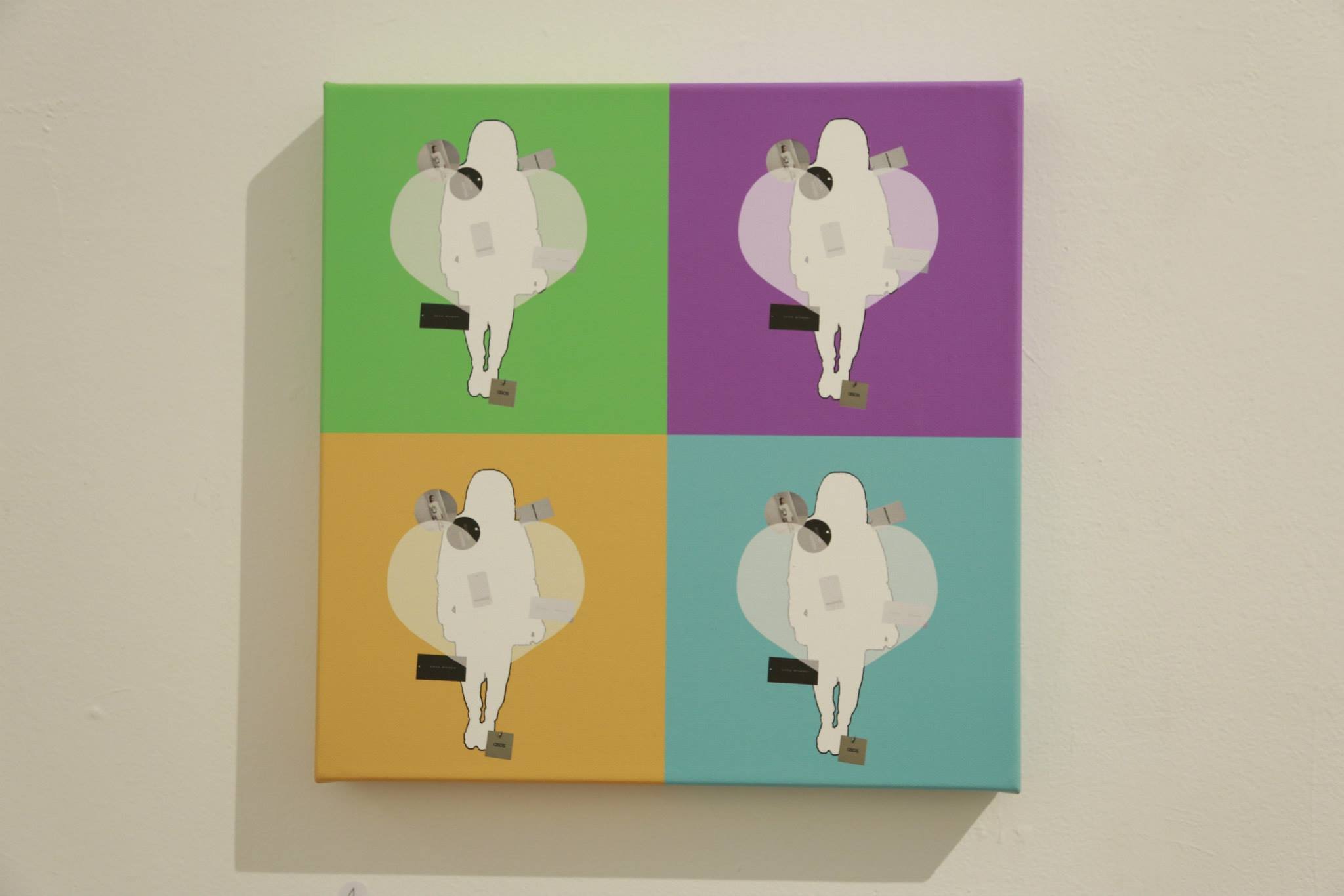
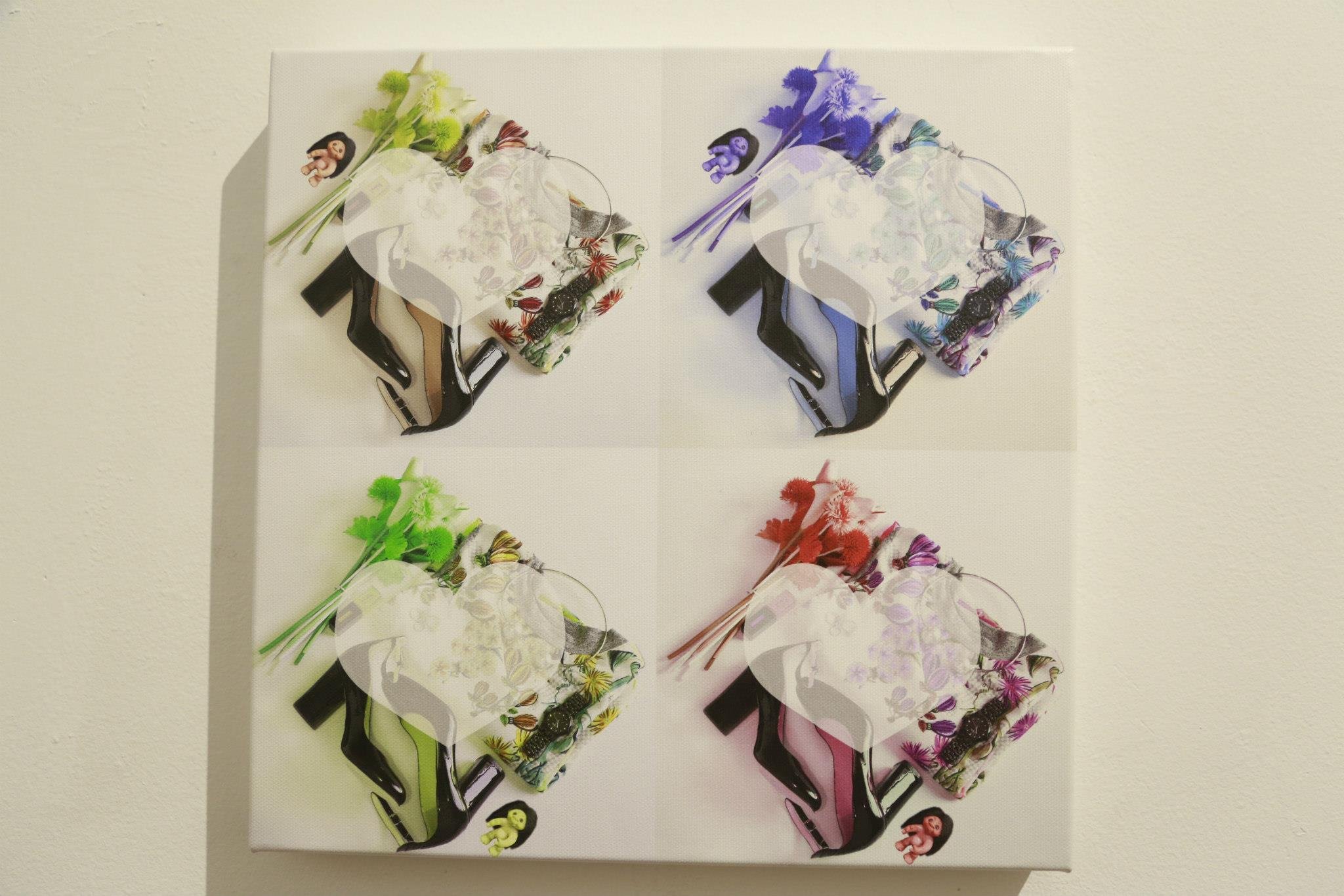
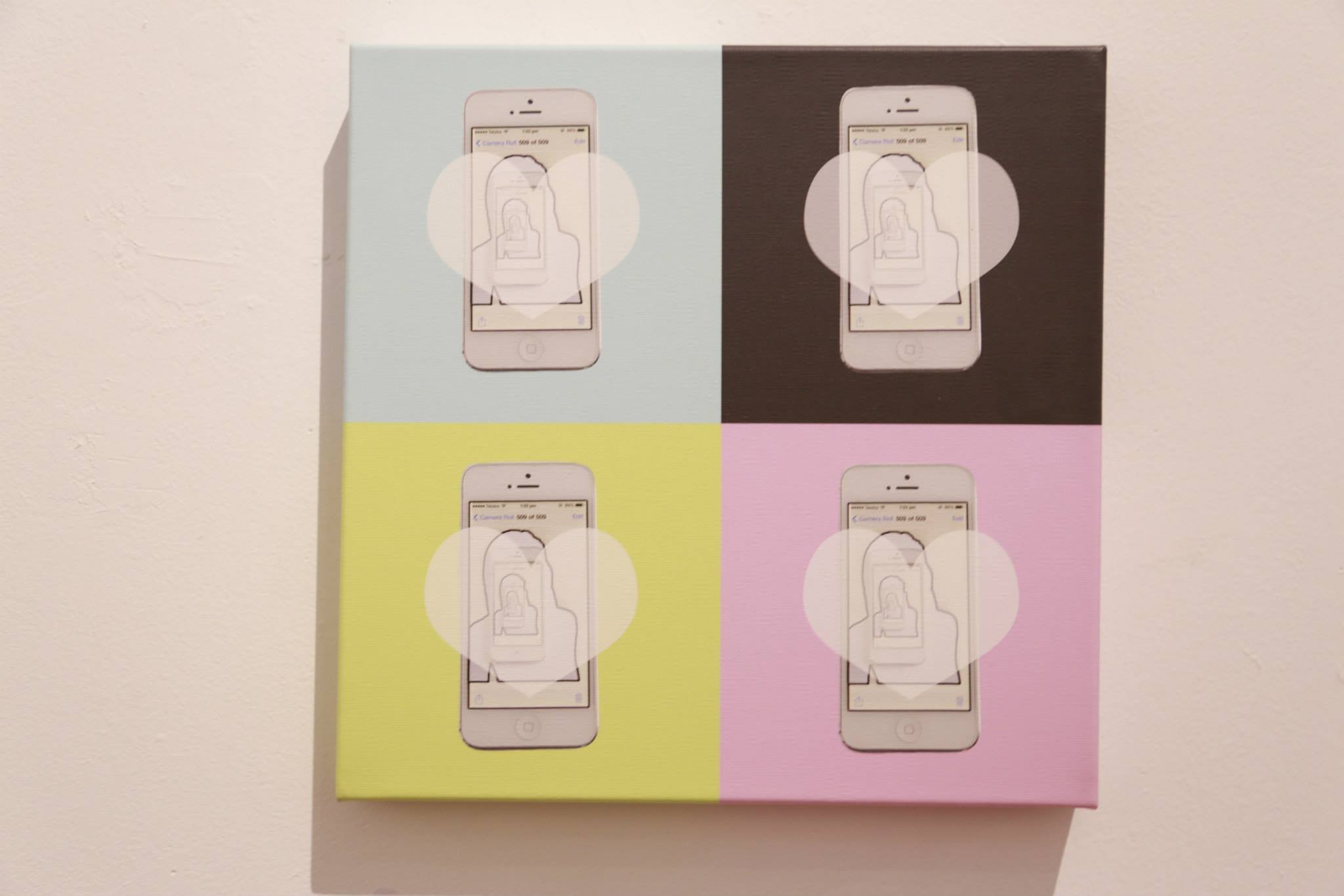

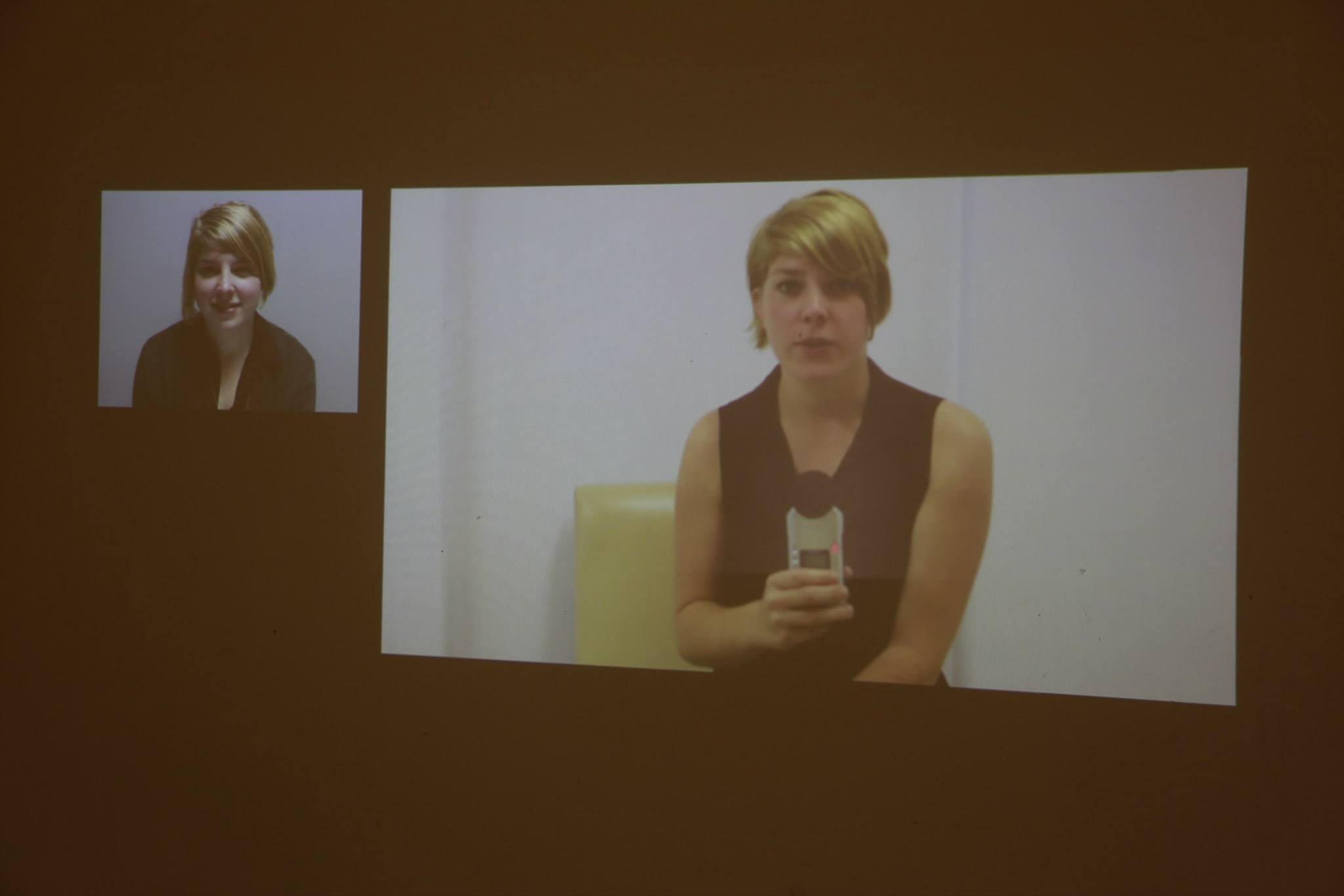


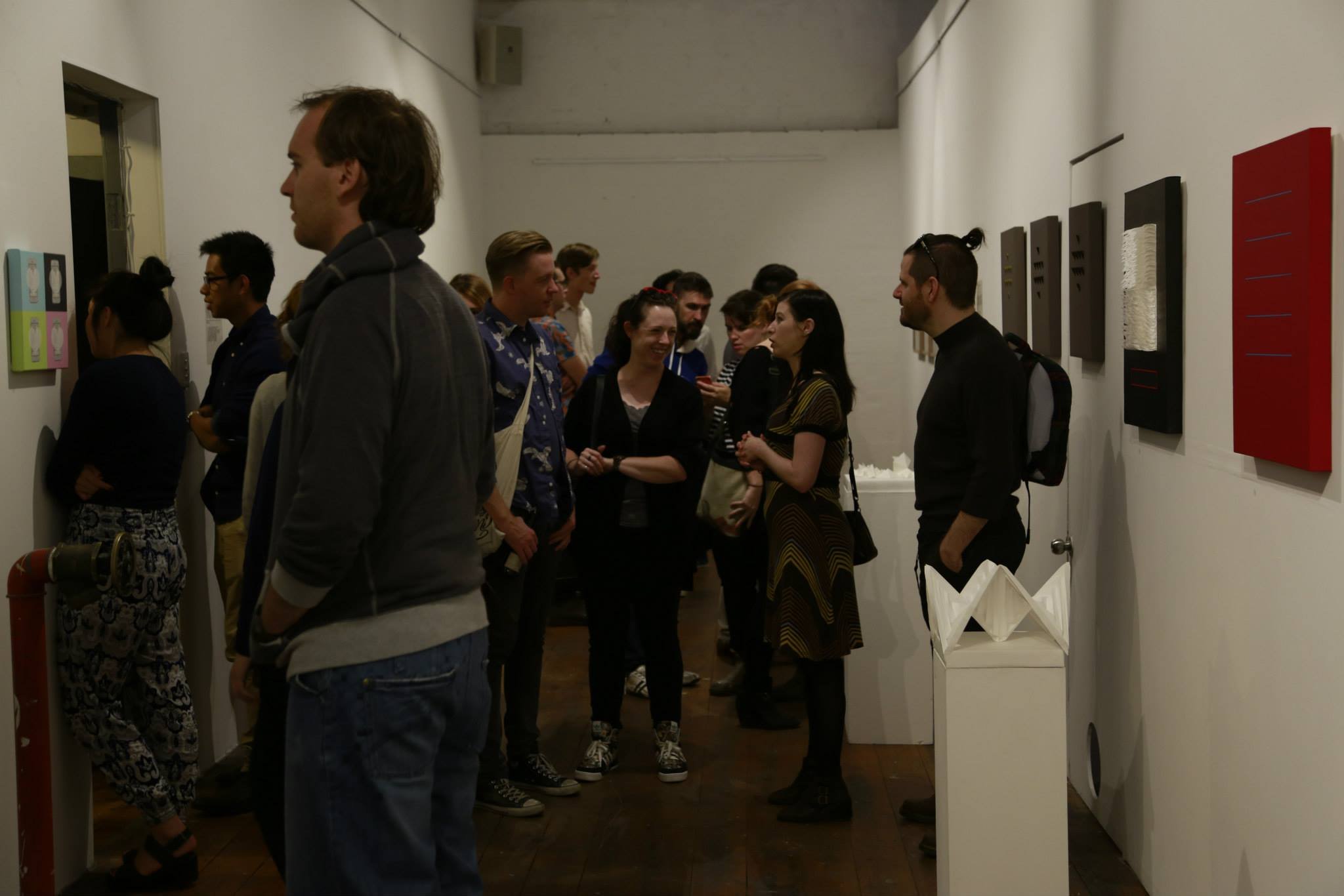
The internet creates an unparalleled encompassing experience. A mirage of democratic instant access to information. We crave this instant gratification: a like, a comment, a post – proving to ourselves that what we create is validity.
The Internet is a Cultural Object.
If our entire population suddenly ceased to exist in some major apocalyptic manner, and the only remnant to remain was a device containing the internet, what would the people of the future think of us, as they attempted to discover who and what we all were, all by looking through the internet exactly as it is today (thought provoking from Kate Geck).
The internet has become an expectation and a necessity. We cannot seem to tolerate lengthy periods of time without the immediacy of information – it has become second nature. Virtual object, capital, and existence has dissolved from artificial into real, and tangible.
In this exhibition, we seek to investigate conceptions of art practice, formalised aesthetics, and identity relationships with(in) technology. We additionally hope to question the role of autonomy, ubiquity, and how to engage critique within this ostensible collective that is the internet. How does our internet life alter social relations and raise questions about identity, privacy, and desire? What are our (false) expectations and assumptions in regards to transparency, digital capital, accessibility, and the ownership of information.
Living within in the Internet complicates and continuously expands comprehensions.
There are so many questions: What are our new visual metaphors for self and subjecthood? Where is the activism? How does information loop and translate between interfaces and communicators? How does one own online digital data content and what does this ownership signify? How does the colour palette of a contemporary painter encompass their personal screen time? What happens when data is discarded and then reused? When does the Internet act as an independent agent? Who do see on google street view? What is intimacy?
We are constantly being during the internet, not before, after or without.
The Internet is a Cultural Object investigates aesthetic formalisms, and socialised action, while considering contemporary arts practice as framed within internet as zeitgeist.
curated by Miriam Arbus.
Exhibiting artists include:
Claire Virgona
Kate Geck
Sarah Rhiannon
Tansy Jana McNally
Tessy King and Niamh Minogue
Jen Fullerton
Wyatt Knowles
Heidi Stevens
Courtney Blackney
Alun Rhys Jones
Nigel Tan with Kevin Leong and Dylan Ang
S. J. de Rosa
Cate Gowers
BK
Mark Payne
Damien Orriss
Siobhan Dodds
Melissa Martin
Maddy Anderson
Emily Vuong
Eugene Mott
Richie Cyngler
Tunni Kraus, Brendan Bensky and Ronch Willner
Ree Hegh
Pierre Proske
Scott Anderson
Maeve Holmes
